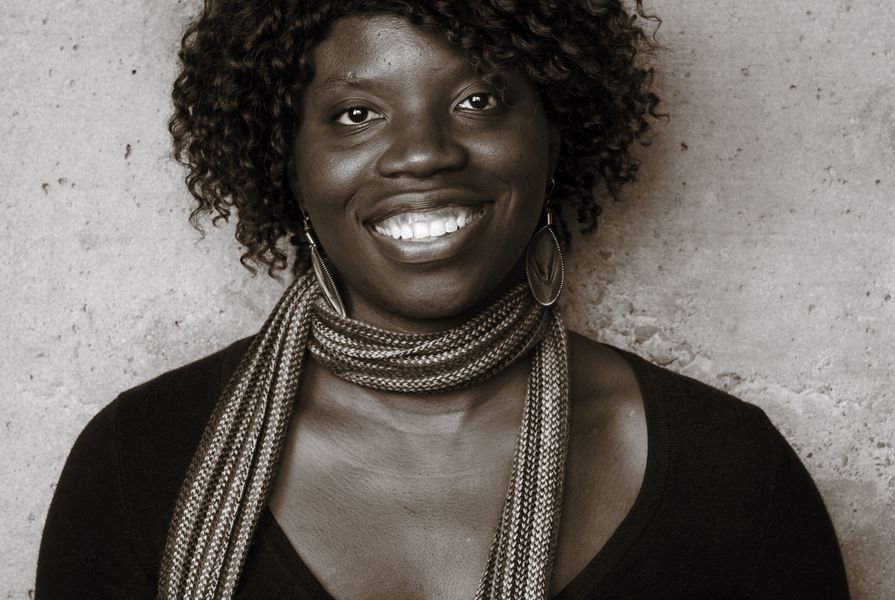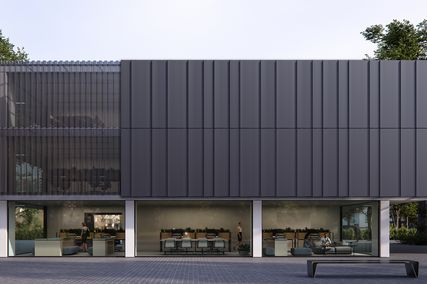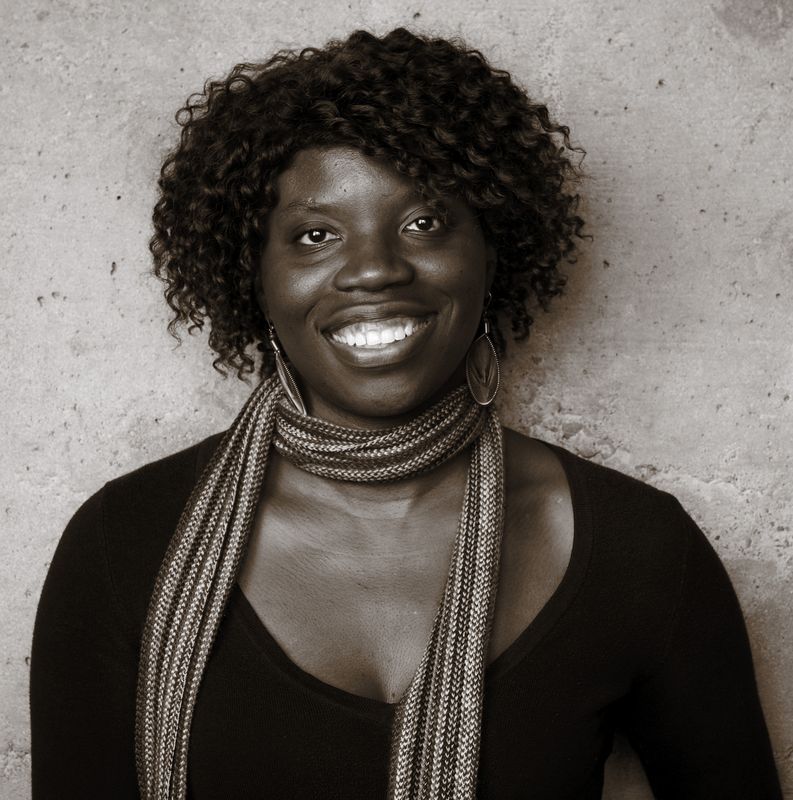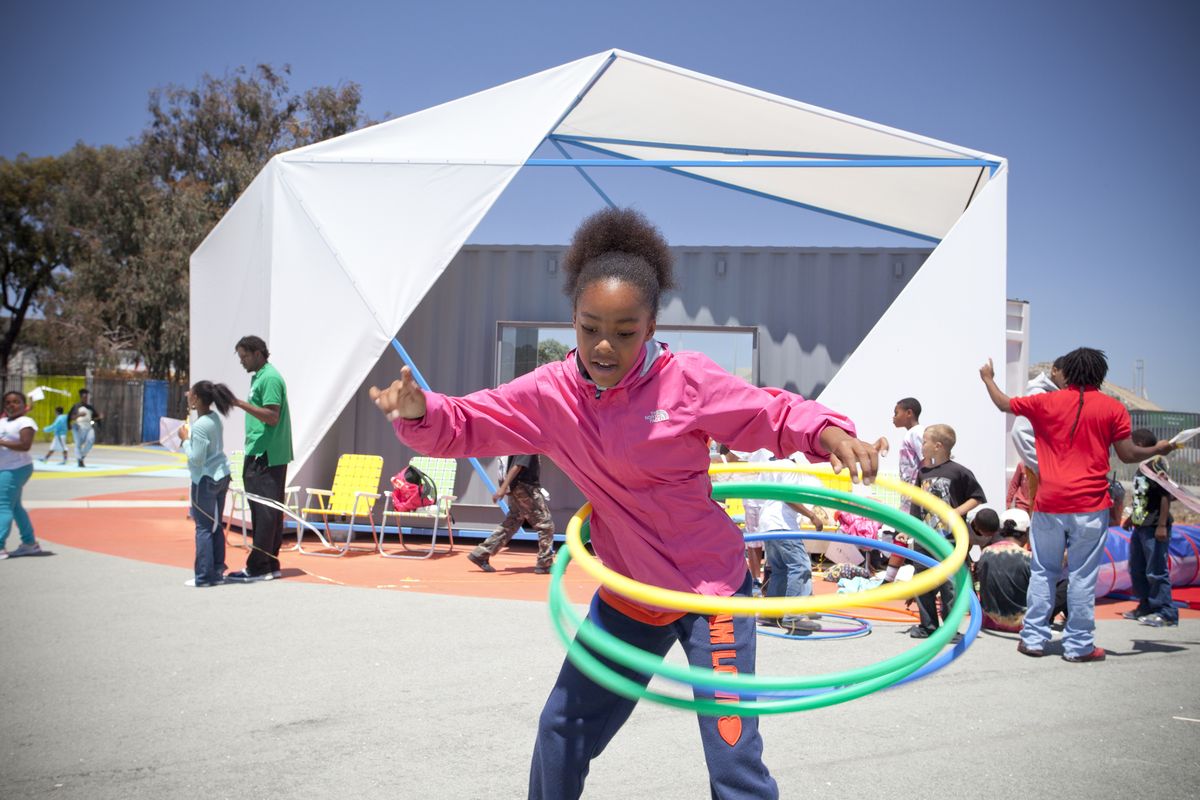Liz Ogbu, the designer, urbanist and “spatial justice activist” behind San Francisco firm Studio O, came to Australia in 2016 as the Droga Architect in Residence. Here she reminisces about her experience in Australia and notes the importance of international exchange in informing the fight against injustice.
She rails against the “Howard Roark mystique” – the archetypal individualist architect of Ayn Rand’s The Fountainhead – and embraces design as a collective process.
Josh Harris: Before we get to the Droga residency and Australia, I wanted to ask about your work in the US over the past year or so, given it’s been such a tumultuous time. There’s been the biggest mass movement against black oppression since at least the civil rights era, and a disastrously managed pandemic that has impacted most heavily on marginalized people – how have you responded to some of these events, and how has it affected your work?
Liz Ogbu: The Buddhist leader reverend angel Kyodo Williams said early in the pandemic that the virus knows no borders or boundaries, but it knows how to follow the rivers of injustice that were already in place. I’ve seen in my work that none of this stuff is new.
As it relates to COVID, I work mostly in low-income communities of colour, with people who are essential workers who are in grocery stores and other positions where they are at risk. When there were layoffs at the beginning of the pandemic, they would be the ones that were most impacted. What that’s meant for my work is that we’ve shifted more towards asking, “what is the rapid response? What do people need right now?” I have a project in San Francisco where normally we would be doing programming all year, interim activations of spaces, circuses and harvest festivals – which clearly we could not do in a pandemic, but we had the budget already allotted from the client, so we reached out to our community partners and said, “What is the need? We have resources, what can we do?” And we heard there were huge food insecurity issues. So we hustled within our networks, and we were able to reach a partnership with the San Francisco produce market to turn our site into a food access site – at one point we were giving away 300 bags of food weekly and organizing with the Department of Public Health to do COVID testing on site.
And then on the racial justice front, I feel all of my projects inherently have been talking about the intersection of race and space, and I feel we’re finally at the point where people are thinking, “Whoa, yeah, that’s a thing.” Where previously it would have been hard to find funding, or where we were doing that stuff, but doing it on the side and trying to shoehorn it in, now there’s more opportunities to really put these questions front and centre.
At a project in Charlottesville, Virginia – pre-pandemic, pre-George Floyd and Brianna Taylor – we had been talking about how the work we’re doing is not just a redevelopment of housing but it’s really about “how are we fundamentally shifting things so that we’re giving people an opportunity to thrive?”. My non-for-profit partner there said, “if all we do is build housing, we’re just helping the poor be poor better.” And so we’ve really taken as our mandate: yes, giving these hundred and fifty families who are living in subsidized housing, new homes, that’s great, but it doesn’t actually help them if we’re not leveraging the opportunity that comes with redevelopment.
I wrote a piece not too long ago where I talked about the difference between urgency and complacency and that seems like a loop that we’re constantly. I feel like this moment could be different, but I think that, time will tell whether or not we’re prepping to go into another state of complacency that’s essentially business as usual with a better Band-Aid. Whether or not we can keep the fire hot and burning to make sure that we actually do revolutionary change as opposed to just tweak things is the outstanding question of the moment.
JH: Let’s go back five years to your time in Australia. While you were here you visited five cities, gave four lectures, ran two workshops and took part in 31 meetings. I wonder if there were particular experiences or conversations that stood out to you, that have stayed with you?
Ogbu ran a workshop in Alice Springs as part of her residency.
Image: Studio O
LO: There were a lot of different conversations that felt really profound and, in some ways, there were really interesting parallels to the moment we were just talking about: issues related to race and difference and what has happened in the past and how that shapes what’s happening right now. All of those things felt really present when I was in Australia, as well as the idea of “what are the things that we’re not talking about, but that are there – felt by some, invisible to others?” I had several conversations that felt really illuminating, showing the different realities that different people are living and how when we don’t talk about certain things it’s really easy to make assumptions. I remember talking to Jefa Greenaway, one of two licensed Aboriginal architects in the state of Victoria, and here in the states – I’m not licensed – but the number of licensed black female architects is so small that they all know their [licence] number. I know what it’s like to be in a field that does not look like me and where the narrative that is centred is the exact opposite of how I look and how I am. But that’s not a conversation that I had with anyone else.
I was in Alice Springs and a meeting was set up with an Aboriginal woman who had been active in the community development process in her community and the non-profit who helped set it up. I was asking her all of these questions about her life and what it meant for her to be involved in this process, and what she felt about how Aboriginals were treated and how the culture was recognized or not recognized. She was telling all of these stories, and after that meeting, the guy from the not-for-profit said to me, “I’ve been working with her for years and I feel I just heard things that I had never heard before.” He was super conscientious and thoughtful, so that clearly wasn’t the problem. There were just some things that weren’t part of the conversation. I was really struck by what happens when we don’t talk about certain things, which really plays out in how I do my work now. How do I use design and the design process to surface the stories that need to be told but that often aren’t visible to certain levels of power and privilege?
JH: You mentioned in your closing address for the residency that in Australia problems of race are often thought about as something that happens elsewhere – in remote Northern Territory, for instance. Could you speak to how you saw this working in Australia; this process of locating racism, oppression in a faraway place or time?
LO: It’s very reminiscent of the stories I remember being taught when I was a kid here in the US. In elementary school I was taught about America as a great, big melting pot; people came from all of these places and we have America – isn’t it beautiful? and I felt I heard echoes of that in my time of Australia. Yes, we had these moments of difference, but we’re multicultural. The melting pot analogy is also about erasure, as if those differences do not matter. We’re all under this one umbrella, without ever acknowledging that the umbrella that we’re under is defined by white supremacy.
How do we replace the melting pot analogy with the mosaic analogy, where you recognize and identify each [group of people], you understand the power dynamics and what they bring to the whole instead of reducing them? When we do the erasing and the blending it lets us off the hook for negotiating things that are problematic. When it comes to design, what that means is that the lens through which we look at ends up coming through an elite and sometimes patronizing form. When “design for good” is talked about, the people who are determining what is good are not the people who are impacted by the issues. I’m known for railing against hero architecture, the Howard Roark mystique. When we don’t talk about difference, when we don’t talk about the past and who’s been harmed in the past, the harm continues and gets perpetuated in more insidious ways, where it’s not as blatant.
JH: How do you think that the Howard Rourke-like approach can be taken out of the way that architects operate? Is there something innate in architecture as a profession, that makes it a top-down practice definitionally?
A community engagement project on former industrial land in San Francisco’s Hunters Point.
Image: Anne Hamersky
LO: I think that we need to totally rethink what architectural education is. I’ve said I was trained to be a white supremacist; I was trained to represent that ideology of power over instead of power with. We all have the expertise that we bring to the table and that that expertise is important. I think about how we work with other experts, and I talk a lot about citizen experts, the folks who live in these communities. In the traditional architecture process, we don’t have space to acknowledge that expertise, let alone celebrate it.
Moving away from Howard Roark is to say that design is a collective process. Anytime something is getting built, there are resources coming to the table, and I think the question is, “how do we use those resources beyond just delivering the building, but to use the act of bringing resources to trigger some sort of transformation?
JH: I read in your end report from the residency about this idea of equitable development. You were talking about the Sirius public housing building in Sydney, and you said there is an alternative to what happened there, which is “equitable development,” where instead of just having a focus on profit alone, the profit motive could be retained, but other considerations could be factored in. How does this work? Is social justice or spatial justice really compatible with profit? Why would a developer subordinate profit to questions of justice?
LO: There are some interesting conversations about that happening right now in the states; if I just look at how people have been sort of rocked by both COVID and the Black Lives Matter movement, there’s a real emotional pull in the idea that “I don’t want to contribute to harm,” and I feel like that shouldn’t be underestimated. When the profit motive is the only thing by which our success is judged, then we will continue to have more pandemics where people are harmed, we will continue to have more senseless killing of unarmed people of colour, that’s just going to be a given. I wouldn’t underestimate the power of wanting to not be complicit and harming other people. But I think that what people often feel like they lack is the alternative way.
So [the question is] how to show there’s a way where you can meet your costs and get a little bit extra but you could also do good. I have a project right now where the client is a for-profit developer; in the beginning, there were a lot of back-and-forth battles. I know they hired me and a couple other members of the team in part because they really wanted to do good, so the desire was there. We would often say, “let’s just try this little think of meeting with people and running listening sessions or opening up this or being transparent about that. And what has happened is that they’ve actually seen some of the normal fights that they would have, they didn’t have. People are coming out in city council meetings and speaking in support of this developer, which is unheard of in the very contentious climate in this town. But it’s because all of these different moves that we’ve made have actually helped to make people feel as if they’re being listened to and given them things that they could see that they need. And so, at the end of the day, the crazy thing is, I’m not going to say it’s going to be more profitable for this developer, but in some ways, the process of doing it, this project has been easier than what they faced in some other cities, where they didn’t prioritize this kind of stuff.
JH: Getting back to Droga, overall, how did you find the Droga program? Was it a useful exercise for you?
LO: It’s funny how I came to be a part of the program. I met Lee Stickells of the University of Sydney at a conference in New Zealand a couple of years prior and we kept in touch and then he said “Hey, if you’re ever interested in coming to Australia, there’s this residency opportunity.” I had never been, and I was looking for a way to take a break from my own practice to think about different things, so I thought “Sure, I’ll put my hat in the ring.” It was great to get it. It was nice to get the opportunity just to be in Australia. I had only looked at it from afar and so to get immersed in it and travel to different places in the country and see the variety of different conditions that existed, was a great opportunity. In my work, I often have projects all over the world and the benefit of that for me is I feel like I’m able to bring different thoughts together and I can see the issues that I look at in different contexts.
Being able to do that in Australia was tremendously helpful for me, both understanding what was the state of design within Australia but then also thinking about how certain questions would be answered if I was in the US, versus in Australia. That was a useful trajectory to be able to experience. There were lots of interesting people that I met and so I really appreciated the opportunity to be able to connect with them.
JH: Have you kept in contact with people that you met through Drogo?
LO: I really connected with Amelia Thorpe, Lee’s wife, and she actually interviewed me a year or so ago for a book that she just sent in the mail.
And then there’re some folks up in the Northern Territory that I’ve communicated with from time to time, and Co Design Studio who I worked with in Melbourne, and ran a workshop with them, they’ve actually come to the states a couple of times and so I’ve been able to meet with them and in the early days of the pandemic we did happy hour on Zoom.
I would like to come back and see how things have progressed, especially given what’s happened here, there’re also some interesting conversations that I would love to have in Australia now.
JH: Any thoughts on the concept of architectural residencies in general?
LO: I think there’s a power in this kind of international exchange. It’s really easy to think the US is quite distinct from Australia, Australia is quite distinct from the US and Europe. All of these places are quite different, but the reality is that there are some fundamental issues that we continue to wrestle with regardless of what country you happen to be in. Whether it’s the disproportionate impacts of COVID or the conversation around justice and who gets access to that, including in space, these questions are universal.
I hope that there are continued opportunities where we can cross-pollinate and learn from one another and figure out, who’s figured out how to navigate populations that have normally been left out, who’s cracked the nut on that, or what are some innovations that we can transfer? Because I think ultimately getting the idea of a just future, which is something that I have been talking a lot about in my work recently, that’s impossible if there are places in the world where there are significant sections of the population for whom there’s no access to that or very limited access to that.





















